The winter scooter…
by Mike Gulett –
Many important cars are not necessarily sexy sports cars, racing cars or luxury cars: like the Ford Model T and the Iso Isetta (our topic today).
In the aftermath of World War II, Europe faced widespread economic hardship, fuel shortages, and a need for affordable, efficient transportation. Into this setting rolled one of the most unique and influential vehicles of the 20th century: the Iso Isetta. Often referred to as a “bubble car” for its rounded, egg-like shape (although I hate that name, it was popular in the press), the Isetta represented a radical departure from conventional automotive thinking. Developed by the Italian company Iso SpA in the early 1950s and later licensed and produced by several manufacturers—including BMW—the Isetta was an important innovation that helped reshape the postwar car world.
Iso SpA was best known at the time for producing refrigerators, scooters, and small utility vehicles. Renzo Rivolta, the company’s founder, saw a market opportunity for a small, economical car that could bridge the gap between motorcycles and traditional automobiles. In 1953, Iso introduced the Isetta at the Turin Motor Show. It was unlike anything seen before: compact, lightweight, and instantly recognizable thanks to its single front-opening door, swing away steering column and panoramic windows.
Measuring just under 8 feet in length and barely 4.5 feet wide, the Isetta was designed for maximum efficiency and simplicity. It was powered by a 236cc two-stroke engine derived from a motorcycle and could achieve fuel economy in the range of 50–70 miles per gallon. Its top speed hovered around 45 mph—adequate for urban and suburban environments where speed was secondary to practicality.
What made the Isetta truly innovative was its radical design philosophy. At a time when cars were growing longer, heavier, and more complex, the Isetta turned in the opposite direction: it was a study in minimalism. Its front-door configuration—where the entire front end swung open to reveal the interior—eliminated the need for side doors and made entering and exiting in tight spaces remarkably easy. The Isetta could be parked front end first toward the curb and the driver and passenger could step out directly onto the sidewalk.
The Motor Press Loved the Isetta
The British car publication, Motor wrote about the Iso Isetta on September 22, 1954,
“…the Isetta is boldly unconventional vehicle which fulfills two main purposes. It provides transportation of a kind, which is cheaper than conventional motoring but more comfortable by far than motorcycling.
The basic difference between the Isetta and any other vehicle is that the entry is from the front in the manner of the hansom cab, instead of being from the side as is nowadays usual.”
Torino Motori tested one of the prototypes in late 1952 and wrote,
“It is important,” the magazine stated, noting Iso’s approach to motoring for the masses, “to understand that this little car defined as ‘the winter scooter’, really strays far in general style from the conventional ideas about cars, and achieves a completely new and very original look. People that haven’t been able to afford a car so far due to financial limitation, now find in the Isetta a practical and economical vehicle that can comfortably seat two people on any road in any weather…It is another step toward ‘motorization for everybody’ that is the base for social and economic welfare.” [2]
With seating for two adults and a small parcel shelf, it provided just enough room to make city commuting practical for individuals and small families.
Iso licensed the Isetta to several manufacturers, including BMW, who made the most lasting mark on the car’s legacy. In the mid-1950s, BMW was in dire financial straits. The company lacked the resources to develop a new vehicle from scratch and needed a hit to survive. They acquired the rights to produce the Isetta, heavily revised it—including fitting it with a four-stroke 250cc single-cylinder engine from their R25 motorcycle—and began production in 1955.
BMW’s gamble paid off handsomely. The BMW Isetta became a runaway success, particularly in West Germany, where fuel economy, affordability, and maneuverability were in high demand. Between 1955 and 1962, BMW sold more than 160,000 Isettas, helping stabilize the company financially and paving the way for future successes such as the BMW 700 and, later, the Neue Klasse sedans.
The Isetta’s success had ripple effects far beyond BMW. It popularized the idea of the “microcar”—a vehicle class that influenced small car design for decades to come. While microcars eventually gave way to more conventional compact cars in the 1960s, the Isetta demonstrated that there was a viable market for minimalistic transportation.
The Isetta was a symbol of optimism and ingenuity in postwar Europe. Its smiling, happy looking design stood in stark contrast to the utilitarianism of many other postwar vehicles. It also represented a democratization of personal mobility, bringing car ownership within reach for thousands of people who might otherwise have relied on bicycles or scooters.
From a technological standpoint, the Isetta was a forerunner in several respects. Its integrated body-and-chassis construction, reliance on motorcycle components, and emphasis on fuel economy were ahead of the time. It was also one of the first mass-produced vehicles to successfully exploit a niche design to appeal emotionally to consumers—an approach later emulated by other iconic cars like the Fiat 500, Mini, and Volkswagen Beetle.
The Myth of the Door Design
The myth of how the Iso Isetta door was designed has developed a life of its own. Even the AI program, ChatGPT 40, got it wrong when I first asked the question and then when I pushed it a little further it came up with the right answer.
The Myth: the Isetta door was designed after a home refrigerator door because Iso was a refrigerator maker before.
The Truth: the Isetta door design had nothing to do with a refrigerator door.
This urban myth has been promoted by many people in the car world including Jay Leno and Keith Martin.
Why would Iso design the door for their first car after a refrigerator door? It does not make much sense to me.
The truth is much more interesting and believable.
The Isetta is a ground breaking design that was created by new engineers hired by Rivolta for that purpose. These engineers had not worked in the Iso business of scooters and motorcycles or the older Iso predecessor business, the Isothermous refrigeration business.
These new engineers were: Ermenegildo Preti (an aeronautical engineer and a professor at Milano Politecnico) and Pierluigi Raggi (also an aeronautical engineer) [1].
Renzo Rivolta and Ermenegildo Preti came up with this basic idea separately; Preti called it the ‘city car’ by which he meant, a car designed to be easy to use in congested cities, not for long road trips (perhaps the first car intended for such a purpose). Preti and Raggi supplied the brilliant details of the Iso Isetta design and function.
Ermenegildo Preti arrived for his interview with Renzo Rivolta in 1952 with a wooden mock up model of the ‘city car’ [2]. This model had the now famous front opening door of the Isetta. Contrary to urban legend this door had nothing to do with Iso’s previous refrigerator business. Preti had not worked in the refrigerator, motor scooter or motorcycle business but came to Iso directly from the aeronautical industry and academia [1]. His concepts for the ‘city car’, which became the Isetta were unique to him and he applied for patents on this design in 1950 and Iso applied for patents on some of these design ideas in 1952 [2].
The one door on the Iso Isetta opened from the front, like a hansom cab, as noted by some journalists at the time. This unique door allowed the Isetta to park nose first toward the sidewalk and the door would open with the steering wheel moving out of the way so that the occupants could step right out onto the sidewalk. An Isetta took up much less space parked on the street than any conventional car and was shorter than the width of a typical American car.
There were two rear wheels, which were very close together eliminating the need for a differential and thus saving expense and weight. The engine used was the Iso two stroke, single cylinder 198 cc motorcycle engine with the twin piston design producing 9.5 hp. This engine was placed behind the occupants so that an engine bonnet did not obstruct the view out of the front, allowing the entire front of the car to be the door.
In hindsight, the Iso Isetta was more than a quirky anomaly—it was a genuine innovation that reflected its era’s social, economic, and technological realities. It helped save BMW, inspired a generation of compact cars, and offered an imaginative solution to real-world problems. Today, it is celebrated as a cult classic, a museum piece, and a cultural artifact—proof that innovation often comes in the most unexpected packages.
When you see an Isetta stop and appreciate the innovation and the history. Almost certainly the Isetta you see will be a BMW, not an Iso, but that is just fine enjoy it anyway.
Let us know what you think in the Comments.
References
[1] Campetti, Flavio, Da Iso a ISORIVOLTA (Giorgio Nada Editore, 2004).
[2] Goodfellow, Winston, Iso Rivolta The Men, The Machines (Giorgio Nada Editore, 1995).
Research and some text by ChatGPT 40.
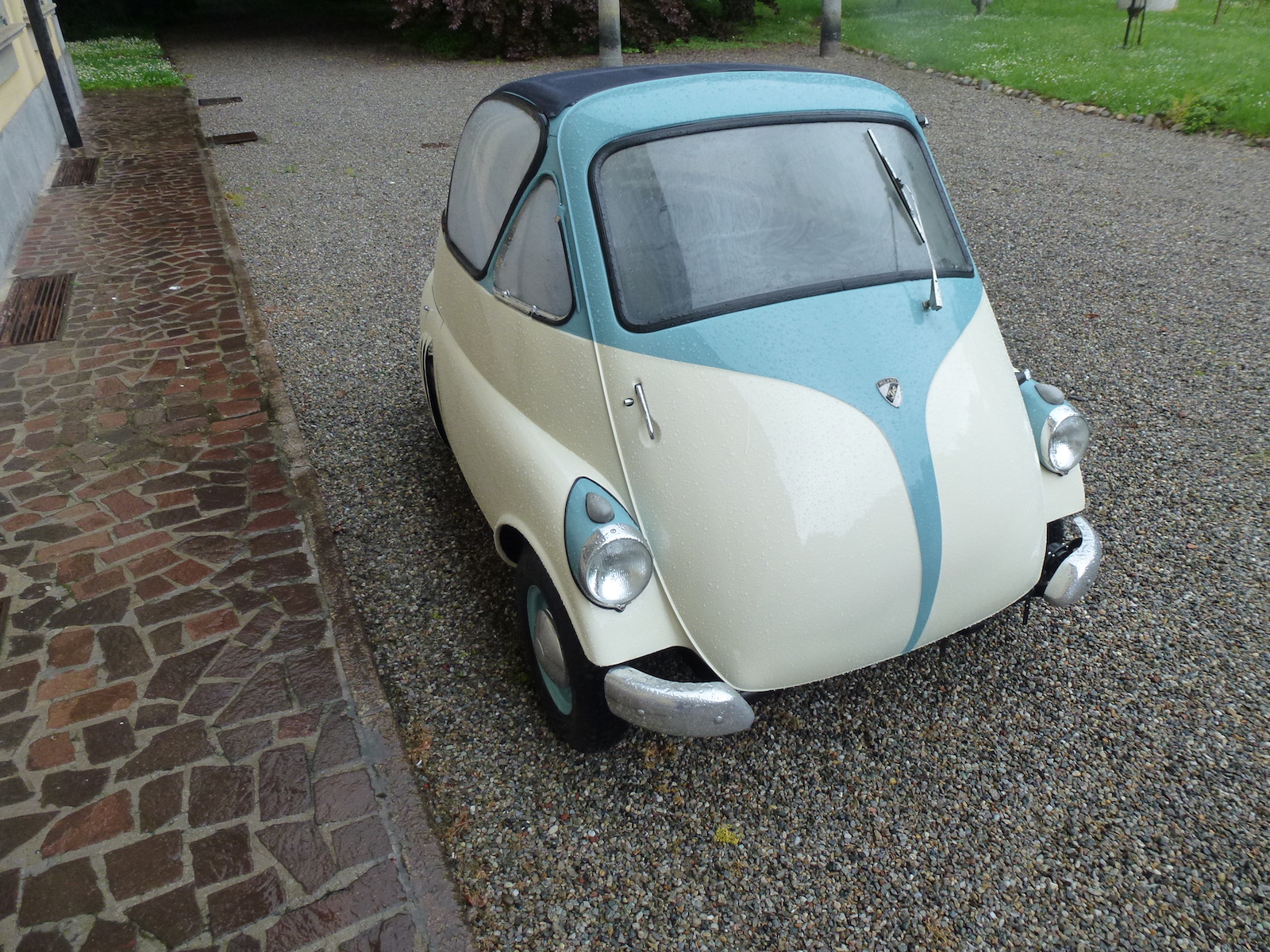
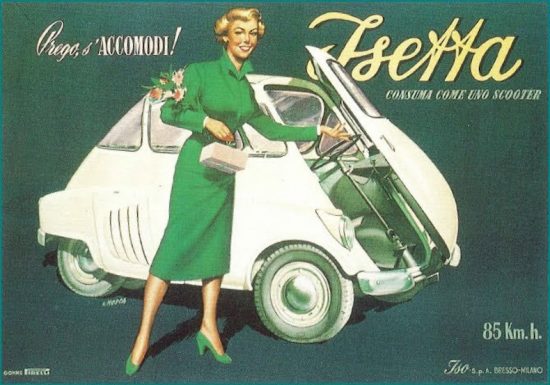
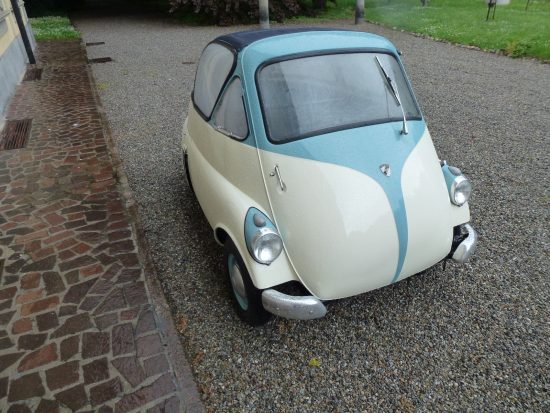
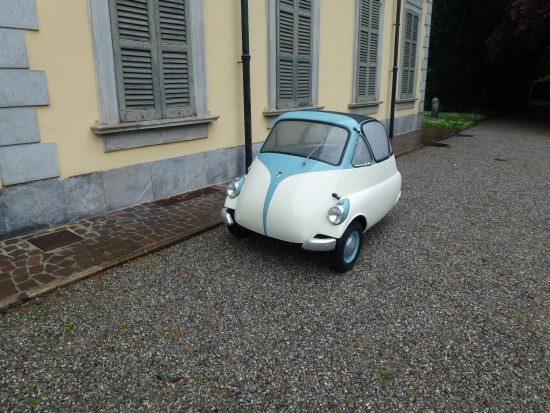
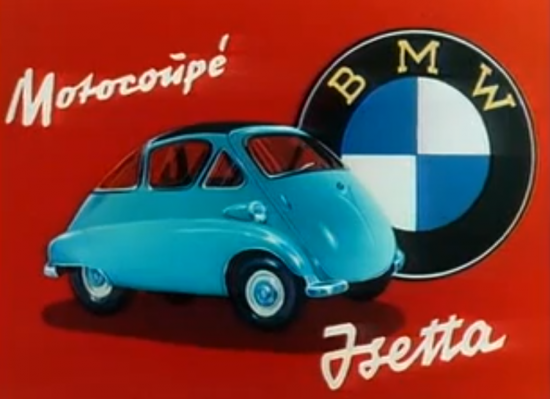
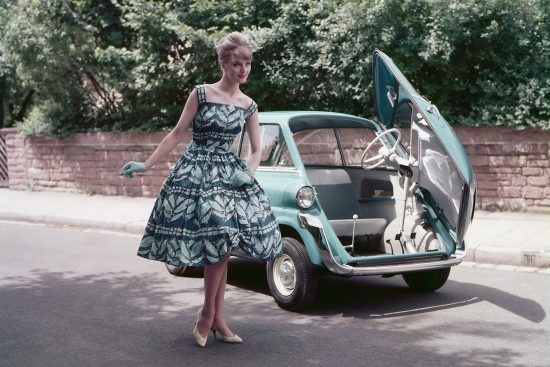
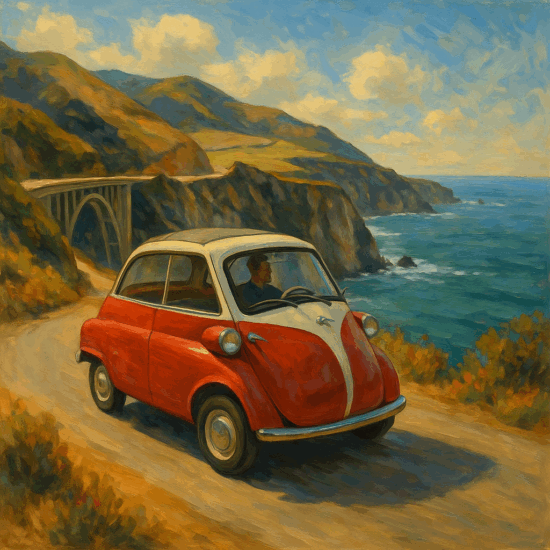
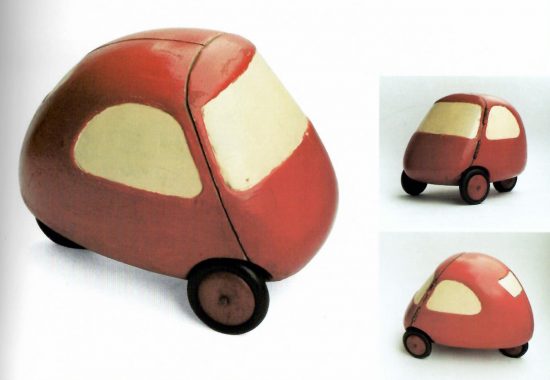
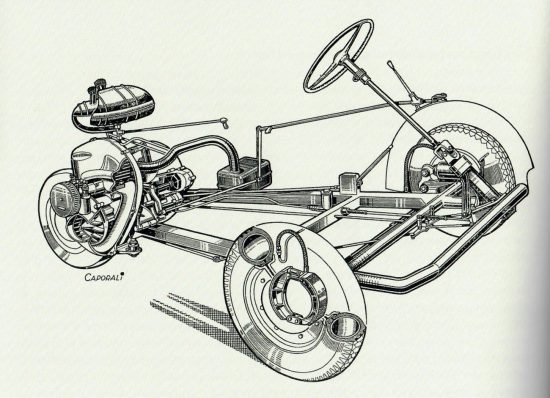
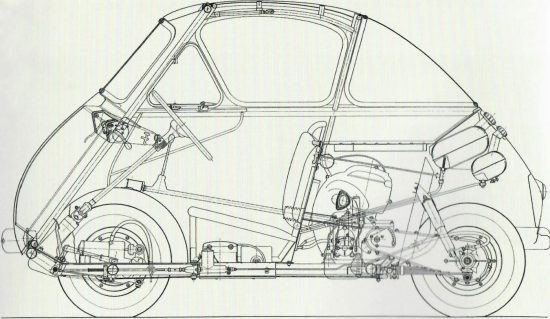
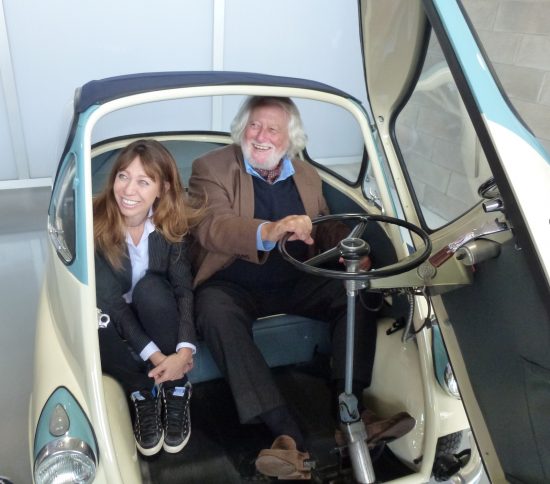
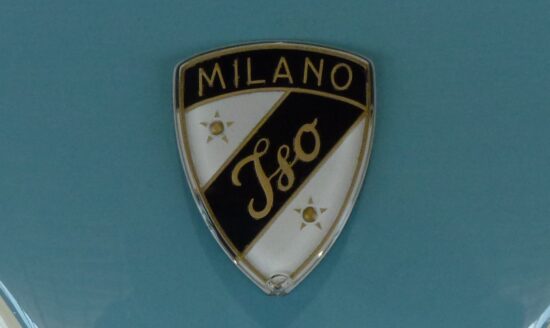
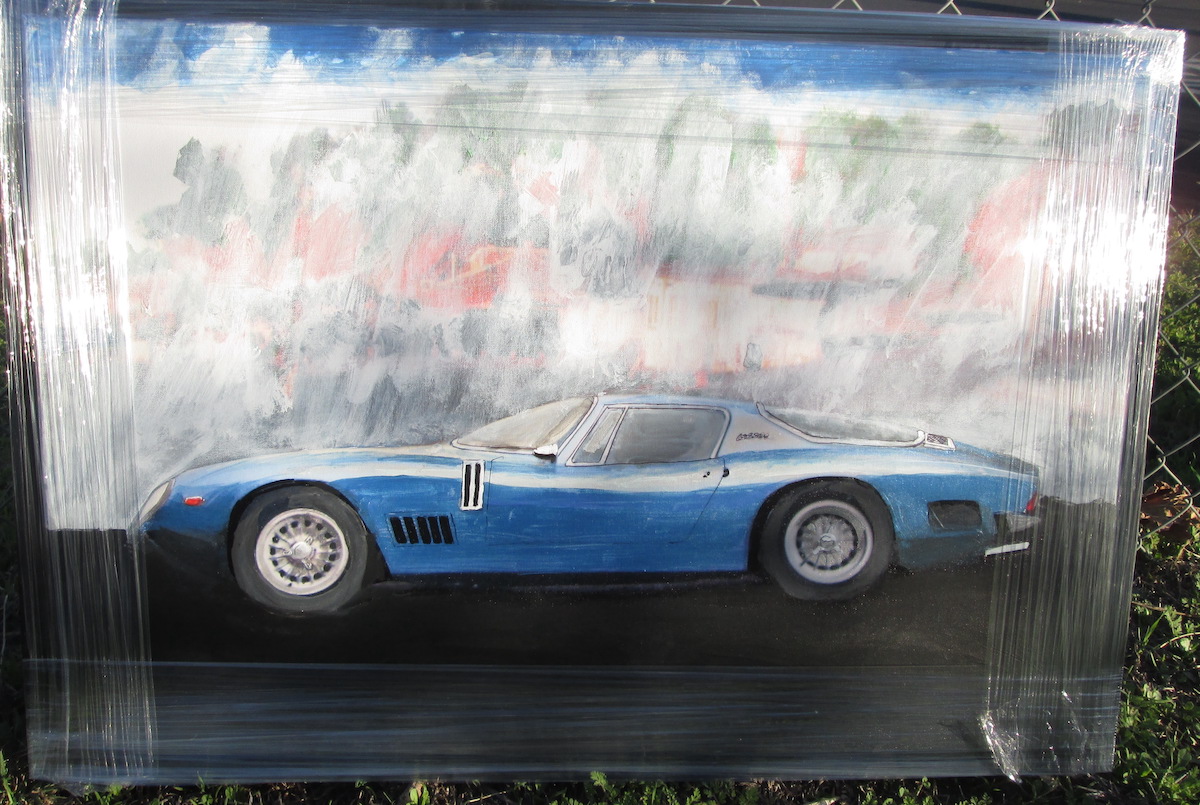

Was made in Brazil as well by Romi Industries, a machinery maker.
https://en.wikipedia.org/wiki/Isetta#Romi-Isetta_(Brazil)
Mike,
Nicely done and great research. I enjoyed the read.
Great well written article. The Iso Bizzarrini club should include it in their magazine.
Your research is excellent. Now write a similar article on the Iso Rivolta. It would be a logical next chapter to this article since Isotta sales gave Iso the funds to build a cool sports car.
Mike,
The coolest thing is watching the elegant Cary Grant as a pitchman for the BMW version. He was the last person you would think would be driving an Isetta, and that was the point.
As a sidenote, Mr. Grant, a roughneck from Bristol, England, always said that the greatest character he ever played was Cary Grant. One time a fan came up to Mr. Grant and said that she always wanted to meet Cary Grant, to which he replied, that was his dream, too!!!
Glenn in Brooklyn, NY
Here is Cary Grant in an Isetta.
A very good article, Mike. Thank you for dispelling the myth about the origins of the front door. In fact, the origins may go further back. In 1932, aerodynamicist James V. Martin unveiled his Aerodynamic 3-wheel car (now in possession of the Lane Museum), with single front opening door. Among other places, photos of this car appeared in at least one aircraft magazine of the time.
Iso engineer Ermenegildo Preti began his engineering studies in the late 1930s at the Milano Polytechnic. It is no great stretch of the imagination that Preti may have seen Martin’s design and adapted it to his visions of a space efficient scooter-based city car. There is no proof of this that I know of, but it was possible and is fun to contemplate.
The Isetta is truly a remarkable design.